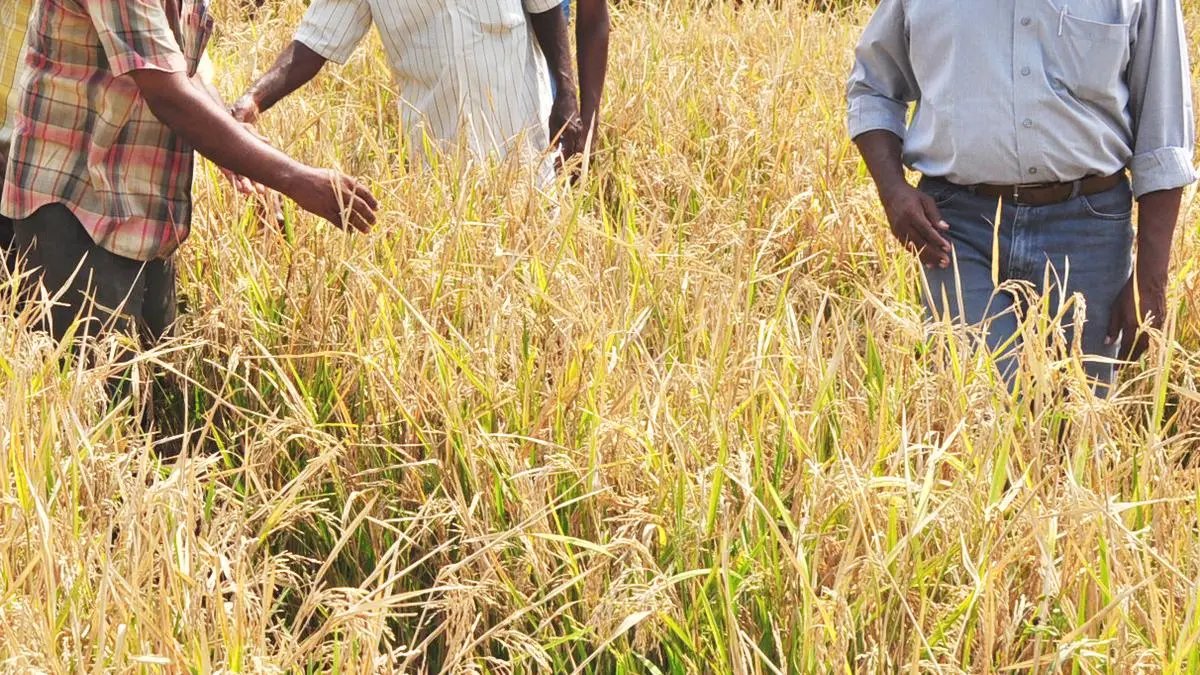Hybrid rice acreage likely to increase this kharif cropping season


File photo
Scientists of Tamil Nadu Agricultural University during a awareness campaign about hybrid rice seed production at Varathampalayam village near Sathiyamangalam.
Photo:HANDOUT_E_MAIL.
| Photo Credit:
HANDOUT_E_MAIL.
The area under hybrid rice varieties is likely to rise during the ongoing kharif cropping season, with more farmers showing interest in planting hybrids to take advantage of higher yields and returns. Hybrid paddy seed vendors such as Bayer CropScience and SeedWorks are witnessing increase in sales this cropping season. The paddy seed market in India is dominated by the research and open pollinated varieties, even as farmers are slowly warming up to hybrids.
“The early market assessment for Kharif 2025 suggests a promising 6- 8 per cent increase in hybrid rice acreage compared to last year,” said Simon Wiebusch, Country Divisional Head – Crop Science Division, Bayer in India, Bangladesh and Sri Lanka. “This growth is being driven by a continued shift in farmer preference towards hybrid varieties, supported by favourable rice procurement prices and the potential for improved return on investment. The overall long-term trend remains positive, reinforcing confidence in the hybrid segment,” Weibusch said.
The early and widespread onset of monsoon has given a boost to the rice plantings this kharif with the acreage witnessing a 17 per cent increase at 31.94 million hectares as of August 1, compared with the same period last year. “The hybrid rice is cultivated on only about 6 per cent of the 43 million hectares in India. However, in the core hybrid rice areas of eastern markets, the adoption rate is closer to 15 per cent, excluding the southern markets. We remain optimistic about a strong kharif 2025 season for our hybrid portfolio,” Weibusch said.
Yield difference
“The year has been largely good for us from a hybrid rice point of view,” said Venkataram Vasantavada, MD and CEO of SeedWorks International Ltd. “UP and Bihar did not play the way the industry was expecting but other States like Jharkhand, Chhattisgarh, Madhya Pradesh, Odisha, Gujarat and even Nepal are in line with expectations, probably marginally better also”.
Vasantavada said the adoption of hybrid rice is largely triggered by the significant yield difference. The hybrid rice yields are 15-20 per cent higher when compared with the varietal rice. Moreover, the hybrid rice has better tolerance to adverse weather, pest and disease.
Officials at a seed industry body said the States need to incentivise the adoption of hybrid rice as it consumes less water and is more sustainable.
Weibusch said the hybrid varieties offer significantly higher yields, typically 10-25 per cent more than traditional rice, helping boost overall productivity. “These hybrids also demonstrate stronger resilience to both biotic and abiotic stresses, making them more reliable in varying agro-climatic conditions. Additionally, their shorter crop cycles enable farmers to optimize their land use through multiple cropping opportunities. Collectively, these benefits contribute to improved farm incomes and greater food security, making hybrid rice an attractive choice for growers,” Weibusch said.
“With a diverse range of hybrids tailored to meet the varying preferences of farmers, our offerings are designed to optimise crop cycles and deliver improved returns on investment. Furthermore, our hybrid rice seeds are suitable for direct seeding, which can reduce labour costs and improve water efficiency, helping us advance our commitment to making agriculture more sustainable,” Weibusch said.
Published on August 6, 2025


